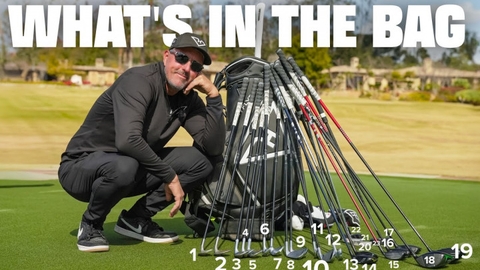-
-
-
Total:
-

Golf rules that demand near-absolute honesty from players
Golf is a sport that highly values integrity, and most players strive to adhere to its rules. However, some rules are easily violated, whether unintentionally or deliberately, and are extremely difficult to enforce.

Below are the six most challenging golf rules to monitor:
Finding a Ball Within 3 Minutes
According to the rules, players have only three minutes to search for a lost ball after determining it is missing. However, at the amateur level, few players actually use a stopwatch to time their search. Amateur golfers often spend a certain amount of time before seriously looking for a lost ball. So, when does the time truly run out? This rule is hard to enforce as it heavily relies on the player’s perception and goodwill.
Improving Conditions Affecting a Shot
Under Rule 8.1, players must not intentionally break branches, trample grass, or move natural objects to create space for a swing. In practice, when entering a bushy area, players might “accidentally” break a branch or press down grass to create a clearer swing path. Distinguishing between legitimate ball searching and intentionally gaining an advantage is challenging, especially without a referee. A violation incurs a two-stroke penalty in stroke play or loss of hole in match play.
Touching Sand During Backswing in a Bunker
Rule 12.2b prohibits players from touching the sand during a backswing in a bunker. While this violation can sometimes be obvious, if a player lightly touches the sand without noticing, or if evidence is erased after the shot, verification becomes difficult. Without clear witnesses, disputes often rely solely on the player’s word, testing their honesty.
Determining the Point Where a Ball Crosses into a Penalty Area
When a ball enters a penalty area, players may drop a ball based on the point where it last crossed the penalty area’s boundary. However, pinpointing this exact spot is challenging, especially if the ball travels far and no one closely observes it. Disagreements between players and their group mates are common.
Dropping a Ball at Knee Height
Since 2019, the rules require players to drop a ball from knee height. In practice, players may bend over or drop from a lower height. Many incorrect drops occur in amateur golf without penalty (which, per the rules, is one stroke). This minor rule is often overlooked.
Choosing a Convenient Relief Point Instead of the “Nearest”
When a ball lands on a cart path or immovable obstruction, players are entitled to free relief at the nearest point. However, some players choose a more advantageous relief point, closer to the fairway or easier to play from, rather than the nearest point. Without someone monitoring the relief process, it’s hard to challenge such actions.
In summary, all six rules demand honesty and a thorough understanding of the game’s regulations. In casual rounds or amateur tournaments, where referees are typically absent, transparency relies almost entirely on individual integrity.
Share:
 Vietnam
Vietnam
 English
English
 Korea
Korea
 China
China











